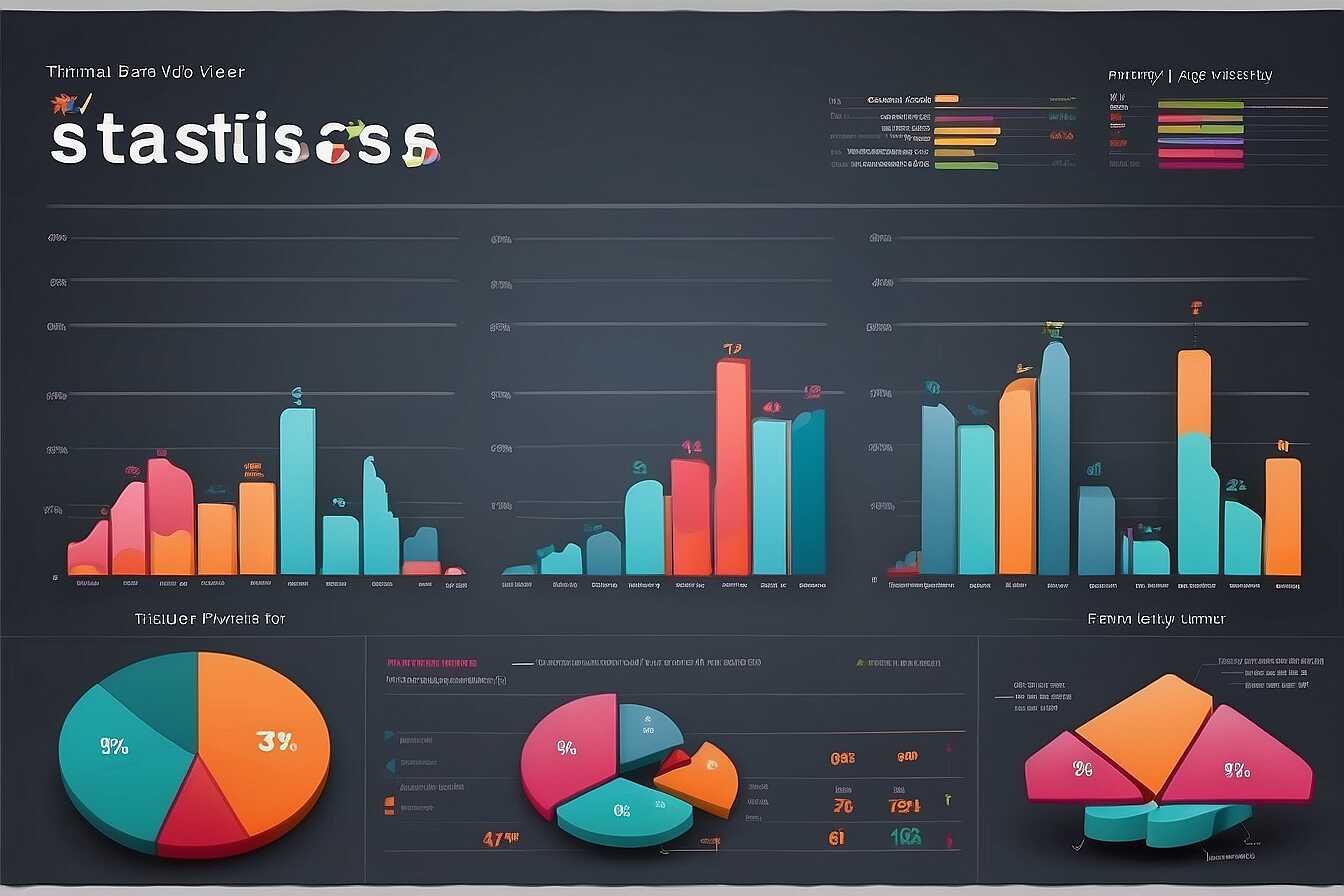Proven techniques to build quality backlinks can significantly enhance your website’s authority and search rankings. In today’s competitive online landscape, understanding how to acquire valuable links is essential for success. At Metrics Rule, we focus on practical strategies that empower SEO professionals and website owners to cultivate high-quality backlinks effectively, ultimately boosting their site’s visibility and credibility.
The Critical Role of Backlinks in SEO Success
Backlinks are essential for enhancing website authority and visibility in search engine results. They act as votes of confidence from other sites, signaling to search engines that your content is trustworthy. The quality of backlinks can significantly impact search engine rankings. When reputable sites link to your page, it not only increases your site’s credibility but also improves its potential to rank higher in search results. Dofollow backlinks carry SEO value and help in passing link equity, while nofollow links, though less effective for ranking, can still drive traffic. According to various studies, over 70% of SEO professionals agree that quality backlinks play a crucial role in driving organic traffic and improving overall SEO success.
Understanding Different Types of Backlinks
In link building, understanding the difference between dofollow and nofollow backlinks is crucial for optimizing SEO performance. Dofollow backlinks contribute directly to a site’s SEO by passing link equity, enhancing its chances to rank higher on search engines like Google and Bing. In contrast, nofollow links do not pass this equity but are still valuable. They can help drive referral traffic and enhance brand visibility. Engaging with different types of links ensures a well-rounded link profile, which is vital for maintaining a strong online presence. Quality backlinks from authoritative websites are proven to enhance relevancy and trustworthiness, making them a key component of effective SEO strategies.
How to Define Your Ideal Backlink Sources
Finding high-authority sites for backlinks involves researching sites that have established credibility within your niche. Start by using tools like Ahrefs or Moz to identify websites that already link to your competitors. Check their domain authority and relevancy to your field. This process will help you focus your efforts on sources that can enhance your backlink strategy. Look for websites that are relevant to your industry, such as blogs, forums, and online communities that provide valuable content. On average, aiming for around 15 to 20 quality backlinks each month can lead to improved results in search engine rankings.
Identifying Relevant Industries for Backlinking
To identify relevant industries for backlinking, research sectors closely aligned with your website’s focus. For example, if your site is in e-commerce, seek backlinks from industry-related blogs, review sites, and suppliers. Engaging with forums specific to fashion or technology can provide opportunities for backlinks. Also, consider local businesses in Vancouver that align with your mission as they may offer mutual promotion opportunities. Quality backlinks from industry-related sources can enhance your site’s authority. Make sure to evaluate each site’s reliability through user reviews and their overall performance in search rankings.

Crafting Exceptional Content That Naturally Attracts Links
To create high-value content that naturally attracts backlinks, focus on producing informative guides, case studies, and unique research insights. These types of content provide immense value to your audience and can lead to organic backlink generation as others in your field reference your work. Engaging content formats like videos, infographics, and eBooks resonate well because they offer diverse ways of consuming information, making them appealing to a broad audience. Additionally, showcasing comparisons or reviews of popular tools or services can enhance your content’s reliability and utility.
Top Content Formats for Backlink Generation
Research shows that the three content formats generating the most backlinks are comprehensive guides, shareable infographics, and original research reports. Comprehensive guides delve deep into a topic, answering numerous questions and providing clear, actionable strategies for readers. Shareable infographics visually simplify complex data, making them easy to share across social media and websites. Original research reports, including unique findings or surveys, attract attention from other publications, driving significant backlinks. Implementing these formats effectively can immensely enhance your backlink building techniques and improve your website’s authority.
Numerical Insights Related to Link Building Success
- Backlinks can improve rankings by up to 90% in search results.
- More than 50% of SEO experts prioritize backlinks for website authority.
- Pages with quality backlinks receive over 5 times more traffic.
- Studies show that 75% of users trust a site more with multiple backlinks.
- Websites with 100+ backlinks generally rank higher than those with fewer.
- Incorporating diverse backlink sources can increase content visibility by 60%.
- Data reveals websites can see improved engagement levels by up to 70% with good backlinks.

Effective Outreach Techniques to Gain Quality Backlinks
To build quality backlinks, personal outreach is essential. Begin by identifying relevant websites in your industry, ensuring they have good authority and trust. Use tools like Ahrefs or Moz to analyze domain authority and find prospects. When reaching out, personalize each email with specific references to their content, showcasing how your linking can enhance their article. Aim for a balance of qualitative and quantitative outreach, ensuring your approach aligns with the target site’s themes. As you research and develop your outreach list, strive to send 10-15 personalized emails per week to see significant results. Building genuine relationships with website owners through follow-ups and engaging on social media boosts your chances of earning those valuable backlinks.
How to Personalize Outreach for Maximum Impact
Personalizing your outreach emails is crucial for creating connections that lead to quality backlinks. Start by mentioning specific articles or posts the website has published that you appreciate. Use a friendly tone and introduce your content as a resource that complements theirs. Highlight mutual benefits, such as how your partnership can improve SEO for both parties. Providing data and insights to support your claims shows reliability. Also, consider sending follow-up emails if you don’t receive a response. This reinforces your interest and enhances your chances of being remembered. Always bring value to the conversation, and be sure to maintain respectful communication to foster a positive relationship.

Leveraging Social Media to Amplify Your Backlink Profile
Social media is a powerful tool that can help increase content visibility, leading to more backlinks. By actively sharing your content on platforms like Twitter, Facebook, LinkedIn, and Instagram, you can reach a wider audience. Engaging your audience is essential; interactions such as comments, shares, and likes can attract attention from other content creators and influencers who may link back to your site. Proven techniques include posting at optimal times, utilizing eye-catching visuals, and participating in discussions relevant to your niche.
Effective Techniques for Engaging Your Audience on Social Media
Engaging your audience requires a mix of creativity and strategic planning. Start by creating quality content that resonates with your followers. Incorporate eye-catching images, videos, and infographics to make your posts stand out. Establish authenticity by sharing behind-the-scenes insights or user-generated content; this builds a community around your brand. Use analytics tools to test and optimize your posting schedule, ensuring you reach your audience when they are most active. Initiate discussions by asking questions and encouraging feedback, which can lead to increased shares. This collective engagement can enhance your backlink profile significantly.
Advantages of Implementing Strong External Links
- Establishing authority improves trustworthiness in your niche.
- Quality backlinks can significantly enhance search engine performance.
- Improved user experience encourages higher visitor retention rates.
- Effective link strategies can lead to better domain authority over time.
- Building connections opens opportunities for collaborations and partnerships.
- A diversified backlink profile can safeguard against algorithm changes.
- Increased referral traffic boosts potential for higher conversions.

Conducting Competitor Analysis for Backlink Inspiration
To analyze competitor backlink profiles effectively, start by identifying top competitors in your niche. Use SEO tools like SEMrush, Ahrefs, or Moz to gain detailed insights into their backlink profiles. These tools allow you to see where competitors have obtained their links, which can uncover valuable link building opportunities for your own site. Look for patterns such as high authority domains linking to your competitors and examine the types of content that secured those links. Exploring your competitors’ backlink strategies can enhance your own linking efforts and improve your search engine rankings.
Utilizing SEO Tools for Backlink Analysis
SEO tools play a crucial role in competitor analysis. Tools like Ahrefs provide comprehensive data on backlink profiles, including the number of links, the domain authority of linking sites, and the anchor texts used. By using these tools, you can identify which content types attract the most links. This data allows you to tailor your own content strategy to focus on creating high-quality resources that earn backlinks. Additionally, you can explore competitor reviews and performance metrics to refine your approach, ensuring you maximize the effectiveness of your backlink strategy.
Best Practices for Maintaining a Robust Backlink Profile
Monitoring a backlink profile involves several key strategies. First, use tools like Google Search Console and SEO software to continuously track your backlinks. Regularly check the quality of links to identify harmful ones that might affect your site’s reliability. To identify harmful links, conduct a link quality assessment focusing on authority, relevance, and trustworthiness. If a link is from a low-quality site, consider disavowing it to protect your site’s reputation. Experts recommend that ideally, at least 70% of your backlinks should come from high-authority domains, which can significantly enhance your site’s search engine ranking.
How to Disavow Links Effectively
Disavowing links effectively is crucial for maintaining a healthy backlink profile. Start by identifying harmful links using backlink monitoring practices that assess both quantity and quality. Utilize tools like SEMrush, Ahrefs, or Moz to assist in this research. Once you’ve compiled a list of low-quality links, create a disavow file that includes their domains. Upload this file to Google Search Console to inform them not to consider these links in their ranking algorithms. This process enhances your website’s authority by removing potentially detrimental associations, improving your overall SEO strategy.
Relevant Companies and Their Target Audiences in SEO
- Ahrefs mainly serves SEO professionals seeking comprehensive analytics.
- SEMrush appeals to digital marketers looking for keyword insights and tracking.
- Moz targets small business owners interested in user-friendly tools and resources.
- Ubersuggest is popular among content creators wanting to optimize their blogs.
- Linkody provides services to anyone wanting to track backlink performance easily.
- Majestic is favored by advanced users focusing on in-depth link analysis.
- Each brand attracts different user groups based on their tool complexity and focus.
Evaluating the Effectiveness of Your Link-Building Efforts
Measuring the effectiveness of your backlink strategy requires a mix of qualitative and quantitative assessments. Start by analyzing key performance indicators (KPIs) such as organic traffic, page authority, domain authority, and search engine rankings. Tools like Google Analytics and Ahrefs provide robust backlink analysis tools that show how your backlinks contribute to website authority improvement. Review trends in traffic and engagement metrics, ensuring that your efforts are driving the desired results. Regularly testing and reviewing these metrics helps you compare the performance of different backlinks and links, enabling you to refine your strategy for optimal impact.
Essential Tools for Backlink Performance Analysis
To effectively analyze your backlink performance, utilize essential tools like Ahrefs, SEMrush, and Moz. Ahrefs provides comprehensive link analysis, allowing you to see the quality and reliability of each backlink. SEMrush offers insightful data on the traffic brought in by your backlinks, enabling a direct comparison of performance. Moz’s Domain Authority score helps gauge the overall strength of your backlinks in relation to search engine rankings. Leveraging these tools helps you ensure that your link-building efforts effectively enhance your website’s authority and improve SEO performance.
